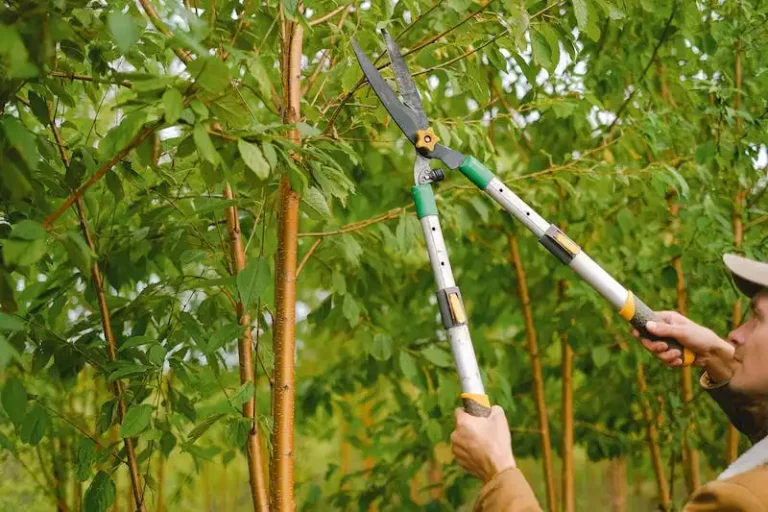Sorrel, also called Rumex or sourgrass, is a leafy herb with a refreshing tart flavor. It is easy to grow and adds a zing to soups, sandwiches, and salads. In this guide, we will provide you with all the information you need to successfully grow and care for sorrel plants in your home garden.
Before you start planting sorrel, it’s important to select a suitable site for your plants. Sorrel needs a sunny location with well-draining soil. If your garden soil is heavy or clayey, you can improve its drainage by adding organic matter such as compost or well-rotted manure. Sorrel also prefers slightly acidic soil, so you can add a fertilizer that is specifically formulated for acid-loving plants.
When it comes to spacing, sorrel plants need about 12-18 inches of space between each plant. You can start sorrel from seeds or purchase seedlings from a local nursery. If you are starting from seeds, sow them at a depth of about ¼ inch and keep the soil lightly moist until the seedlings emerge. Once the seedlings have grown a few inches tall, thin them out so that they are about 6 inches apart.
As your sorrel plants grow, they may need some support to keep them from flopping over. You can use stakes or cages to support the plants, especially if you live in a windy area. Mulching around the base of the plants can also help to conserve moisture and suppress weeds. Sorrel plants are relatively low-maintenance and do not require frequent watering. However, if you live in a hot and dry climate, you may need to water more often to keep the plants healthy.
During the growing season, you can harvest sorrel leaves as soon as they are big enough to use. You can simply cut off the outer leaves, leaving the center intact to allow for continuous growth. To store sorrel, you can wrap the leaves in a damp paper towel and place them in a plastic bag in the refrigerator. Sorrel leaves can be stored for up to a week. If you have an abundance of sorrel, you can also freeze the leaves for future use.
When it comes to overwintering sorrel, there are a few options you can consider. Sorrel is a hardy perennial and can survive winter in many areas. If you live in a colder climate, you can mulch around the base of the plants to protect them from freezing temperatures. Alternatively, you can dig up the whole plant, divide it, and move the divided plants to a sheltered location for the winter.
If you’re a beginner gardener or have less space in your garden, sorrel is a great herb to grow. It is easy to care for and does not have many common pest or disease problems. Slugs and snails sometimes feed on sorrel plants, so you may need to take measures to protect your plants from these pests. Overall, sorrel is a versatile herb that not only adds a unique flavor to your dishes but also provides numerous health benefits.
If you have any questions about growing, caring for, or harvesting sorrel, there are many online sources and websites where you can find more information. So go ahead and give sorrel a try in your garden, and learn to love the profusion of flavorful leaves it produces!
How to Grow Sorrel
Growing sorrel is a relatively easy task that can be done by any gardener, regardless of their experience level. If you’re interested in adding this versatile and tangy herb to your garden, here’s a step-by-step guide on how to grow sorrel:
- Select a good quality source of sorrel seeds. You can find them at your local garden center or purchase them online.
- Choose a sunny spot in your garden for planting sorrel. It prefers full sun, but can tolerate partial shade.
- Prepare the soil by adding organic matter and fertilizer. Sorrel grows best in fertile soil with good drainage.
- Sow the seeds directly into the soil, about 1/4 inch deep. Water the soil gently to keep it moist, but not waterlogged.
- Keep the soil consistently moist until the seeds germinate, which usually takes around 1-2 weeks.
- Once the sorrel plants have reached about 6 inches in height, you can begin harvesting the leaves. Simply cut them off at the base, leaving the older leaves to continue growing.
- Continue to water and fertilize the sorrel plants regularly. They need about 1 inch of water per week and regular feeding with a balanced fertilizer.
- To prolong the harvesting season, you can pinch off the flower heads as they start to form. This will encourage the plant to produce more leaves instead of focusing on flower production.
- If you have limited space in your garden, sorrel can also be grown in containers. Just make sure the container has good drainage and is placed in a sunny spot.
- To store sorrel leaves, you can keep them in the fridge for up to a week. Alternatively, you can freeze them for longer-term storage.
It’s worth mentioning that sorrel is a perennial herb, which means it will come back year after year. However, it may become less productive as it gets older, so it’s recommended to replant every 2-3 years to maintain a steady supply of fresh leaves.
Sorrel is a versatile herb that can be used in a variety of dishes, including soups, salads, and sauces. Its tangy and lemony flavor adds a unique twist to any recipe. If you have any questions about growing sorrel or need more detailed guidance, consult a gardening expert or refer to a reliable source.
Click Play to Learn How to Grow Sorrel
Growing sorrel is an easy task that you can master by following a few simple rules. If you’re new to gardening or just want to learn more about this versatile herb, you’ve come to the right place. Click play to watch our step-by-step guide on how to plant, grow, and care for sorrel.
Sorrel is a member of the Rumex family and is sometimes referred to as sour dock or garden sorrel. There are different types of sorrel, including common sorrel and French sorrel, which produce delicious greens that are rich in vitamin C.
Before you start planting sorrel, choose a sunny spot in your garden or outdoor space. Sorrel needs at least 6 hours of direct sunlight each day to thrive. Also, make sure to select a well-draining area, as sorrel plants don’t like to sit in water. If your soil is heavy or clay-like, mix in some compost or sand to improve its drainage.
You can start growing sorrel from seeds or by planting young seedlings. If you choose to plant from seeds, sow them directly into the ground in early spring or late fall. Keep the seeds moist and they should germinate within 10-14 days.
Sorrel plants have deep tap roots, so make sure to space them at least 12 inches apart to give them enough room to grow. Water your sorrel plants regularly, especially during dry periods. Aim to keep the soil consistently moist, but not waterlogged.
Once your sorrel plants are established, they require minimal care. Trim any dead or damaged leaves to promote new growth, and prune back the stalks to encourage bushier growth. If you’d like to harvest sorrel to use in your kitchen, simply cut off the outer leaves as needed. Remember to store your harvested sorrel in a plastic bag in the refrigerator to keep it fresh for longer.
Sorrel can also be grown in containers, making it easier to move them around to find the best position for optimal sunlight. Just make sure the container has drainage holes and is filled with a well-draining potting mix.
When it comes to pests and diseases, sorrel is generally a safe and easy plant to grow. However, keep an eye out for slugs, as they sometimes enjoy feasting on sorrel leaves. Mulching around the base of your sorrel plants can help deter slugs and keep the soil temperature and moisture levels consistent.
Thank you for watching our guide! Now that you’ve learned all about planting and caring for sorrel, it’s time to roll up your sleeves and get started. Good luck with your sorrel-growing journey!
How to Plant Sorrel
Sorrel is a leafy green herb that is easy to grow and care for. It is often used in cooking and has a lemony flavor that adds a tangy taste to dishes. If you’re ready to start your own sorrel garden, here are some guidelines to get you started.
Choose the right site: Sorrel prefers well-draining soil and thrives in full sun or partial shade. Make sure to choose a site in your garden that meets these requirements.
Prepare the soil: Before planting sorrel, prepare the soil by removing any rocks, weeds, or debris. You can also add organic matter like compost to improve soil fertility and drainage.
Planting: Sorrel can be grown from seeds or transplants. If you’re planting from seeds, scatter them directly into the prepared soil and lightly cover them with a thin layer of soil. If you’re using transplants, make sure to space them about 12 inches apart to allow for their growth.
Care and support: Sorrel is a relatively low-maintenance plant. Water the plants regularly, keeping the soil moist but not waterlogged. Provide support, such as bamboo stakes, if needed, to prevent the plants from falling over.
Harvesting: You can begin harvesting sorrel leaves when they are about 6 to 8 inches in length. Pick the outer leaves first, leaving the center of the plant to continue growing. To keep your sorrel plants productive, harvest regularly, cutting down to about 1 inch above the ground.
Propagating and pruning: Sorrel plants can be propagated by dividing clumps in early spring or fall. Prune the plants regularly to encourage bushier growth and prevent them from becoming leggy.
Troubleshooting: Sorrel plants are generally pest and disease resistant. However, keep an eye out for slugs, as they may feed on the leaves. If you encounter any problems, refer to a gardening guide or consult with a local expert for effective solutions.
Storage: To store sorrel, keep the leaves unwashed in a plastic bag in the fridge. They should stay fresh for up to a week. If you have excess sorrel, you can also freeze it for later use.
By following these guidelines, you’ll have a great sorrel garden that will provide you with delicious and flavorful leaves throughout the growing season.




